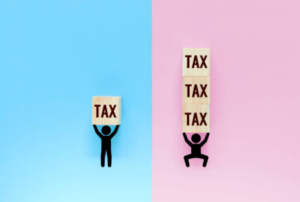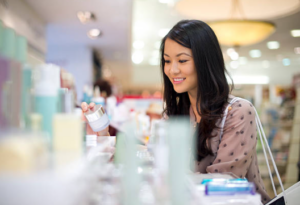Fair or Foul?

In the ever-evolving world of beauty and wellness, where self-care knows no bounds, a controversial topic has emerged from the shadows – gender pricing. The cosmetics and skincare industry, long dominated by marketing strategies and societal norms, has found itself at the center of a heated debate regarding the fairness of pricing based on gender. This blog aims to unravel the layers of gender pricing in beauty and wellness products, exploring the reasons behind the disparity and debating whether it is fair or foul.
The concept of gender pricing, often referred to as the “pink tax,” involves charging different prices for similar products or services based on the customer’s gender. In the beauty and wellness industry, this practice has been pervasive, with women typically facing higher price tags for comparable products that men use. From razors and deodorants to skincare and haircare, the pricing disparity has become a point of contention, sparking conversations about equality and fairness.
Factors Contributing to Gender Pricing
Market Segmentation Strategies: Companies often employ market segmentation to target specific demographics. In the beauty industry, this segmentation is often gender-based, leading to distinct marketing strategies for men and women. Advertisements, promotional materials, and endorsements contribute to creating separate identities for products.
Color and Design Choices: Packaging plays a pivotal role in consumer perception. Products marketed towards women typically feature softer colors, floral designs, and elegant packaging, reinforcing traditional gender norms. The design choices and packaging materials can contribute to higher production costs.
Societal Expectations: The marketing of beauty products frequently capitalizes on societal expectations and stereotypes surrounding femininity and masculinity. This leads to the creation of gender-specific product lines, reinforcing the idea that certain attributes are exclusively associated with one gender.
Claims of Superior Quality: Companies may argue that products designed for women contain higher-quality ingredients, offering enhanced benefits. This claim is often used to justify the higher price points. However, skeptics question the validity of these assertions, emphasizing that the actual differences in formulation might be marginal.
R&D Investments: Companies may argue that the development of specialized formulations requires additional research and development investments. This could include conducting studies on specific skin concerns related to gender or tailoring products to address perceived differences in needs.
Perceived Value: Companies leverage consumer perceptions of value to justify gender-based pricing. The belief that certain products are designed for specific genders may lead consumers to assign a higher value to those products, justifying the premium pricing.
Social Conditioning: The beauty industry often exploits societal conditioning related to beauty standards and self-care. By associating certain products with gender-specific attributes, companies tap into deeply ingrained beliefs about what is considered appropriate or desirable for men and women.
Marketing as a Necessity: Companies may argue that creating separate marketing campaigns and products for different genders is a necessity driven by consumer expectations. Breaking away from these conventions could be perceived as a risk in terms of market share.

The Impact on Consumers
Cumulative Financial Strain: For many consumers, especially women, the cumulative effect of gender pricing over time can lead to significant financial strain. Essential beauty and wellness products, often marketed towards women, come with higher price tags, contributing to an economic burden that is particularly pronounced when considering the existing wage gap between genders.
Disproportionate Spending: The higher prices women often pay for beauty and wellness products can lead to a disproportionate amount of income being allocated to these necessities. This can limit their ability to allocate resources to other essential needs, further exacerbating financial inequalities.
Limited Choices: Gender pricing perpetuates and reinforces traditional gender stereotypes by assigning specific products and price points to each gender. This limits consumer choices and reinforces the idea that certain beauty and wellness practices are inherently tied to one’s gender identity.
Pressure to Conform: Consumers, particularly women, may feel pressured to conform to societal expectations of beauty standards. The perception that certain products are tailored to specific genders may contribute to a sense of obligation to purchase these products, reinforcing societal norms rather than allowing for individual preferences.
Accessibility Challenges: Higher prices for gender-specific products may create accessibility challenges, especially for those with lower incomes. This can impact individuals’ ability to access essential beauty and wellness items, potentially compromising their overall well-being.
Limited Affordability: The gender pricing disparity may result in certain individuals opting for lower-cost alternatives or foregoing certain products altogether due to their unaffordability. This can have implications for personal care, hygiene, and overall self-esteem.
Psychological Stress: The awareness of gender pricing and the associated financial burden can contribute to psychological stress. Consumers may feel a sense of injustice and frustration, questioning the fairness of paying more for products simply based on their gender.
Impact on Self-Esteem: The beauty industry’s reinforcement of gender norms through pricing may impact individuals’ self-esteem. The association of certain products with specific genders can contribute to feelings of inadequacy or exclusion for those who do not conform to traditional gender expectations.

The Call for Change
Social Media Campaigns: Consumer activism has found a powerful platform on social media. Hashtags like #GenderPricing and #PinkTax have gained traction, providing a space for individuals to share their experiences, challenge discriminatory pricing practices, and raise awareness about the broader issue.
Influencer Activism: Influencers and celebrities have played a significant role in amplifying the call for change. Many have used their platforms to speak out against gender pricing, encouraging their followers to be mindful consumers and supporting brands that champion fair pricing practices.
Consumer Boycotts: In response to gender pricing disparities, consumers have initiated boycotts against brands that persist in discriminatory practices. This form of economic protest sends a clear message to companies that consumers are increasingly prioritizing ethical and inclusive business practices.
Consumer Demand for Transparency: Consumers are demanding increased transparency from beauty and wellness brands regarding their pricing strategies. Companies that openly communicate their pricing decisions and engage in a dialogue with consumers about the factors influencing their pricing are more likely to gain trust and support.
Corporate Social Responsibility (CSR): Brands are facing mounting pressure to adopt and communicate strong CSR initiatives. Companies that actively address gender pricing concerns, implement fair pricing practices, and contribute to social causes demonstrate a commitment to ethical business practices.
Legal Challenges and Reforms: The legal landscape is evolving to address gender pricing. Activists and policymakers are working together to challenge discriminatory pricing practices and enact reforms. Recent legislative efforts have aimed at strengthening existing laws and introducing new measures to combat gender-based pricing disparities.
Global Advocacy: Advocacy groups are working on a global scale to address gender pricing, pushing for international standards that discourage discriminatory practices. Collaborative efforts aim to create a more cohesive approach to tackling gender pricing disparities across borders.
Inclusive Marketing Strategies: Progressive brands are adopting inclusive marketing strategies that challenge traditional gender norms. By featuring diverse models, using gender-neutral packaging, and promoting products as suitable for all, these brands contribute to breaking down the barriers that perpetuate gender-based pricing.
Product Development and Pricing Reviews: Some companies are proactively reviewing their product development processes and pricing structures. This includes reevaluating the need for gender-specific formulations and adjusting prices to reflect the actual costs of production rather than conforming to traditional marketing norms.
Empowering Consumers: Education plays a vital role in empowering consumers to make informed choices. Organizations and advocacy groups are initiating programs to educate the public about gender pricing disparities, enabling consumers to recognize and challenge these practices.
Financial Literacy Initiatives: Recognizing the economic impact of gender pricing, initiatives that focus on financial literacy are gaining traction. These programs aim to equip consumers with the knowledge and skills needed to navigate discriminatory pricing structures and make economically sound decisions.
Companies argue that gender-specific products may require different formulations to cater to the distinct needs of men and women. For example, skincare products may claim to address specific concerns related to hormonal differences or differing skin types. However, critics argue that these differences are often exaggerated for marketing purposes, and the underlying ingredients and benefits remain similar.

Some companies justify gender pricing by citing market demand and consumer preferences. They argue that creating separate product lines for men and women allows them to tailor their offerings to the perceived preferences of each gender. However, critics contend that these preferences are shaped by societal expectations and marketing rather than inherent differences in needs.
As awareness grows and conversations around gender pricing gain momentum, consumers are becoming more conscious of their purchasing decisions. Many individuals are actively seeking out brands that promote gender-neutral pricing and inclusivity, forcing companies to reevaluate their strategies.
With increased scrutiny and demand for transparency, the beauty and wellness industry is under pressure to address gender pricing disparities. Companies that fail to adapt to changing consumer expectations risk facing backlash and losing market share to more socially responsible competitors.
Gender pricing in beauty and wellness products is a complex and multifaceted issue that intersects with societal norms, marketing strategies, and economic disparities. While companies may argue that gender-specific pricing is a result of product differentiation and market demand, critics emphasize the perpetuation of harmful stereotypes and economic inequalities. As consumer awareness grows and legislative efforts continue, the beauty industry finds itself at a crossroads. The path forward requires a commitment to inclusivity, transparency, and fairness, challenging long-standing norms and advocating for a beauty and wellness landscape that empowers all individuals, regardless of gender. Ultimately, the question remains: is gender pricing fair or foul? The answer may very well determine the future of an industry that plays a significant role in shaping societal perceptions of beauty and self-care.

